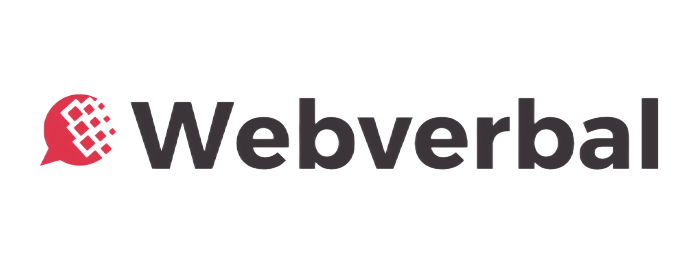Table Of Content
- Executive summary
- 2020–2025: rapid expansion and structural change
- Market size 2025 & segment composition
- Regional penetration: Bharat’s contribution rises
- Quick commerce & micro-fulfilment
- Quick commerce essentials
- UPI & payments
- Investment landscape 2025
- Technology: AI & automation
- 2030 scenarios
- Analyst insights (short conversations)
- Conclusion
- Frequently asked questions
- Selected sources
Executive summary
By 2025, India’s e-commerce market sits in the range of US$125–212 billion depending on data source and GMV definition. This report synthesises the most recent market estimates, policy developments, payment-rail shifts and logistics trends to provide a pragmatic roadmap to 2030. Mobile-first adoption, UPI, quick commerce and deeper Tier-2/3 penetration are the primary structural drivers.
- Market size (2025): Range ~US$125–212B (varies by source and GMV definition).
- Primary growth drivers: Mobile adoption, UPI, quick commerce and regional expansion.
- Investor focus: unit economics, CAC payback and retention rather than pure GMV growth.
2020–2025: rapid expansion and structural change
The chart below is an illustrative timeline showing broad GMV markers used across reports (definitions differ by source).
Market size 2025 & segment composition
Headlines vary depending on whether the report measures marketplace GMV, merchant receipts, or gross transaction value. For practical founder planning, focus on (1) addressable GMV for your product, (2) category mix, and (3) frequency-driven categories that sustain LTV.
| Category | Estimated share (2025) | Notes |
|---|---|---|
| Electronics | ~25–30% | High AOV; seasonal spikes |
| Fashion & Apparel | ~20–25% | Customer-acquisition channel |
| Grocery & FMCG | ~18–22% | High frequency, low AOV |
| Beauty & Personal Care | ~8–12% | Subscription / repeat potential |
| Others (services, home, B2B) | ~10–15% | Includes B2B digitisation |
Model your CAC and payback per category: high-AOV categories tolerate longer payback; grocery demands hyper-efficient logistics and high frequency to be profitable.
Regional penetration: Bharat’s contribution rises
Incremental shoppers in recent years are increasingly from Tier-2/3 towns. This matters for unit economics: longer last-mile legs, local fulfilment partners and vernacular UX change cost structure but unlock scale.
Quick commerce & micro-fulfilment
Quick commerce reset consumer expectations in dense urban pockets. Micro-fulfilment drives lower last-mile costs but raises holding costs. Profitability depends on order density, retention and dynamic assortment optimisation.
Quick commerce essentials
- Inventory density lowers delivery cost but increases inventory holding.
- Retention and basket frequency determine recovery of higher unit costs.
- Partnerships with local kiranas convert capex into operational leverage.
UPI & payments
UPI remains the dominant payment rail for instant mobile checkout. Continued UPI adoption reduces friction and improves conversion. Monitor MDR policy discussions — any formal MDR for select UPI flows would affect merchant economics at scale.
Investment landscape 2025
Capital in 2025 favoured infrastructure that improves unit economics: logistics tech, B2B SaaS for sellers, last-mile optimisation and subscription models. Founders should lead with retention cohorts and stress-tested LTV:CAC in pitches.
| Theme | Investor focus (2025) |
|---|---|
| Logistics & micro-fulfilment | Efficiency & density |
| SaaS for sellers | Monetisation & retention |
| B2B marketplaces | Procurement & margins |
Technology: AI & automation
AI/ML improves recommendations, dynamic pricing and demand prediction—direct levers for better retention and lower returns. Warehouse automation increases throughput but requires order density to justify capex; start with modular automation and software-first optimisation.
2030 scenarios
| Scenario | 2030 estimate (USD) | Key assumption |
|---|---|---|
| Conservative | $300B | Moderate rural growth |
| Base | $327B | Steady infrastructure & retention |
| Optimistic | $500–650B | Rapid rural adoption & platform innovation |
Use the base scenario for conservative planning; adjust for your category-specific dynamics and unit economics.
Analyst insights (short conversations)
Analyst: “Are you seeing repeat behaviour outside metros?”
Founder: “Yes—repeat orders arrive when delivery promises, payouts and returns work. Vernacular UX and local courier reliability matter more than brand spend.”
Investor: “Can micro-fulfilment be profitable?”
Founder: “At density it can—national scale requires shared infrastructure models and marketplace demand.”
Conclusion
By 2025, India’s e-commerce story moves from scale to structure. Founders who own unit economics, retention cohorts and logistics design for Bharat will capture the next decade’s value. Investors should reward clarity in payback windows and durable contribution margins—not just headline GMV.
Frequently asked questions
- What is the size of India’s e-commerce market in 2025?
- Estimates vary by definition; public ranges are approximately US$125B–212B depending on source and GMV scope.
- Which regions are growing fastest?
- Tier-2/3 and smaller towns are the fastest growing cohorts, enabled by affordable smartphones and UPI payments.
- Is quick commerce profitable?
- Not universally; profitability requires density, retention and careful inventory economics. Many players are still optimising.
Selected sources
- Bain & Company — How India Shops Online 2025
- GlobalData — India e-commerce market estimates
- IMARC Group — India e-commerce market report
- IBEF — E-commerce industry overview
- NPCI — UPI statistics (2024–2025)
- ONDC — official portal
- Reuters — reporting on payments & MDR discussions (2025)




